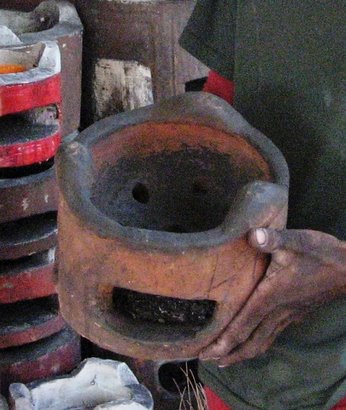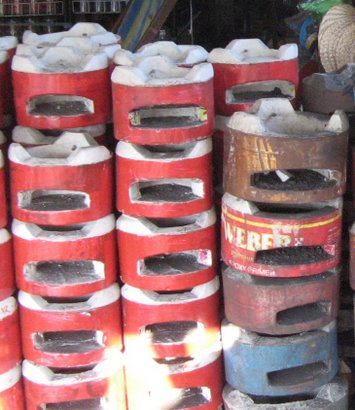Philippine clay charcoal stoves need to be redesigned. Cement charcoal stoves although priced three times as much as clay stoves are now preferred by consumers who perceive cement stoves as more durable than clay. Cement charcoal stoves have a sheet metal covering that holds the stove together.
Last week, I purchased a clay charcoal stove for P30 (US$0.60) in Marikina City. It developed a hairline crack the first time I used it; it did not however fall apart. A woman who had purchased a clay charcoal stove because it is more affordable commented that she tied wire around her clay charcoal stove to keep it from breaking apart.
I visited the government Cottage Industry Training Center (CITC) in Marikina but learned that they no longer teach ceramics and pottery making at CITC because the center's electric kiln is no longer usable. A trainor at the Center revealed that ceramics producers in Metro Manila have closed shop due to the high costs of electricity or LPG needed to heat their kilns. The ones that are surviving are now in the provinces where they use open firing with wood or other biomass.
Lower cost energy is needed to make Philippine products more competitive in local and global markets. Lower cost energy is vital for jobs creation in almost all industries. Hopefully the Philippine government will seriously promote affordable, renewable and sustainable biomass energy as an important solution to poverty alleviation and jobs creation.

Clay charcoal stove sold at a Manila public market
Monday, May 28, 2007
Subscribe to:
Post Comments (Atom)
tincan charcoal stove

easy to make tincan charcoal stove; the smaller can sits inside the larger can for a double wall effect improving efficiency.

Cement charcoal stoves from public market in Paranaque City, Philippines



No comments:
Post a Comment